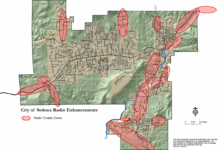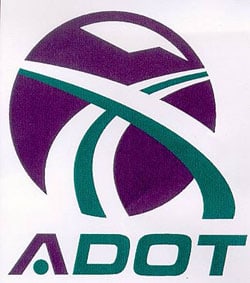Chapel area residents are currently disposing of effluent with on-site wastewater disposal systems — the most common among them — septic systems.
Although Tiffany Construc-tion began installing city sewer lines to the Chapel area on Aug. 4, after receiving a $10 million contract from the city, many Chapel residents can’t afford or just don’t want to connect to Sedona’s wastewater treatment plant, while others need or want the city’s sewer lines.
“Of those I have spoken with, the great majority, 60 to 70 percent, don’t want it,” Chapel resident Cole Greenberg said.
Greenberg doesn’t want it because he doesn’t need it, he said.
“If I can maintain my system and be environmentally responsible for roughly $600 in 17 years, I don’t need it,” he said. “It’s that simple for me.”
Greenberg estimated it will cost him about $20,000 to hire a contractor to connect him to the city’s lateral sewer pipe, fill in his septic tank and pay the $5,325 connection fee. And it will cost the city around $35,000 of its own money to bring him the line.
Centralized wastewater plants are far more expensive than on-site wastewater disposal systems and aren’t as environmentally sound, Greenberg said.
Jan Allbright, an Arizona registered sanitarian and president of the Verde River Citizens Alliance doesn’t agree.
The VRCA considers septic systems to be among the top three threats to the Verde River, he said.
According to a document produced by the University of Arizona Cooperative Extension, the Arizona Department of Environmental Quality calls on-site/septics “the overwhelming activity contributing to water quality impairment in Arizona.”
On-site/septic is responsible for over 90 percent of water problems, the report reads.
Chapel resident, Wendy Ferguson, is co-owner of Contract Wastewater Opera-tions, which runs a wastewater treatment plant for Sedona Shadows and contracts for small-scale centralized wastewater plants around Arizona.
She thinks all cities should connect their residents to municipal wastewater treatment plants.
“The reason we build utilities is to protect groundwater,” she said. “I think it’s a shared burden of all residents. To build it and then say ‘I guess you don’t have to hook up,’ doesn’t make any sense.”
According to Ferguson, the quality of effluent produced by wastewater plants far outweighs the quality of effluent produced by septic systems.
Household wastewater contains bacteria, infectious viruses, household chemicals and excess nutrients such as nitrate, the University of Arizona report stated.
“A septic system that is not operating properly may be a source of drinking water contamination,” according to the report.
Sedona’s water is 400 to 500 feet deep, Henry MacVittie, co-owner of Contract Wastewater Operations said, so there is no concern that Chapel area septic systems are contaminating Sedona’s water.
Lee Hetrick, Sedona division manager for the Arizona Water Company, said there have been no problems with water contamination in the Chapel area.
Septics at Work
Wastewater leaves the house and enters the septic tank, which first acts as a holding tank by allowing the solids to settle out, MacVittie said.
“In septic and municipal treatment plants, bacteria does most of the work,” he said.
From the septic tank, effluent moves through an underground pipe into a 3 foot by 5 foot trench — a leach field.
The pipe comes into a rocky area of the trench and releases the effluent.
“You would never know you were standing on a leach field because the effluent comes in so far down into the rocks,” MacVittie said, “if it’s all working properly.”
One clear sign of a faulty leach field is moisture on ground level. Smaller lots that are closer together are at greater risk for problems with septic systems than lots of an acre or more.
The size of the leach field is based on the size of the septic tank and how fast the soil percolates, he said.
Septic tanks should be pumped every five to seven years, he said, for around $250 if there’s easy access to the tank and up to $450 if there’s no or unknown access.





















